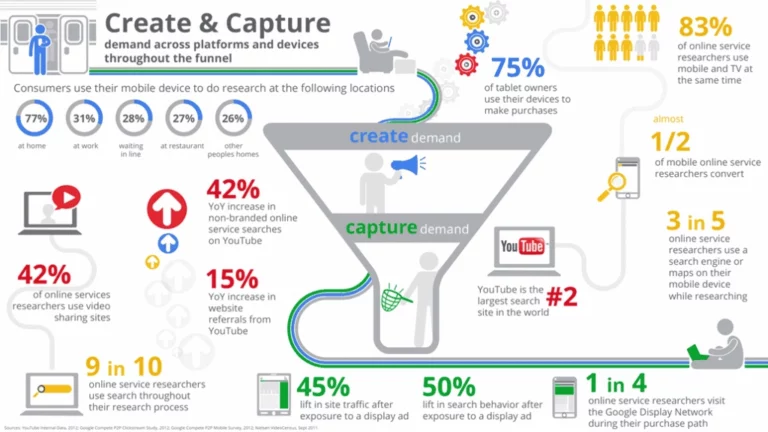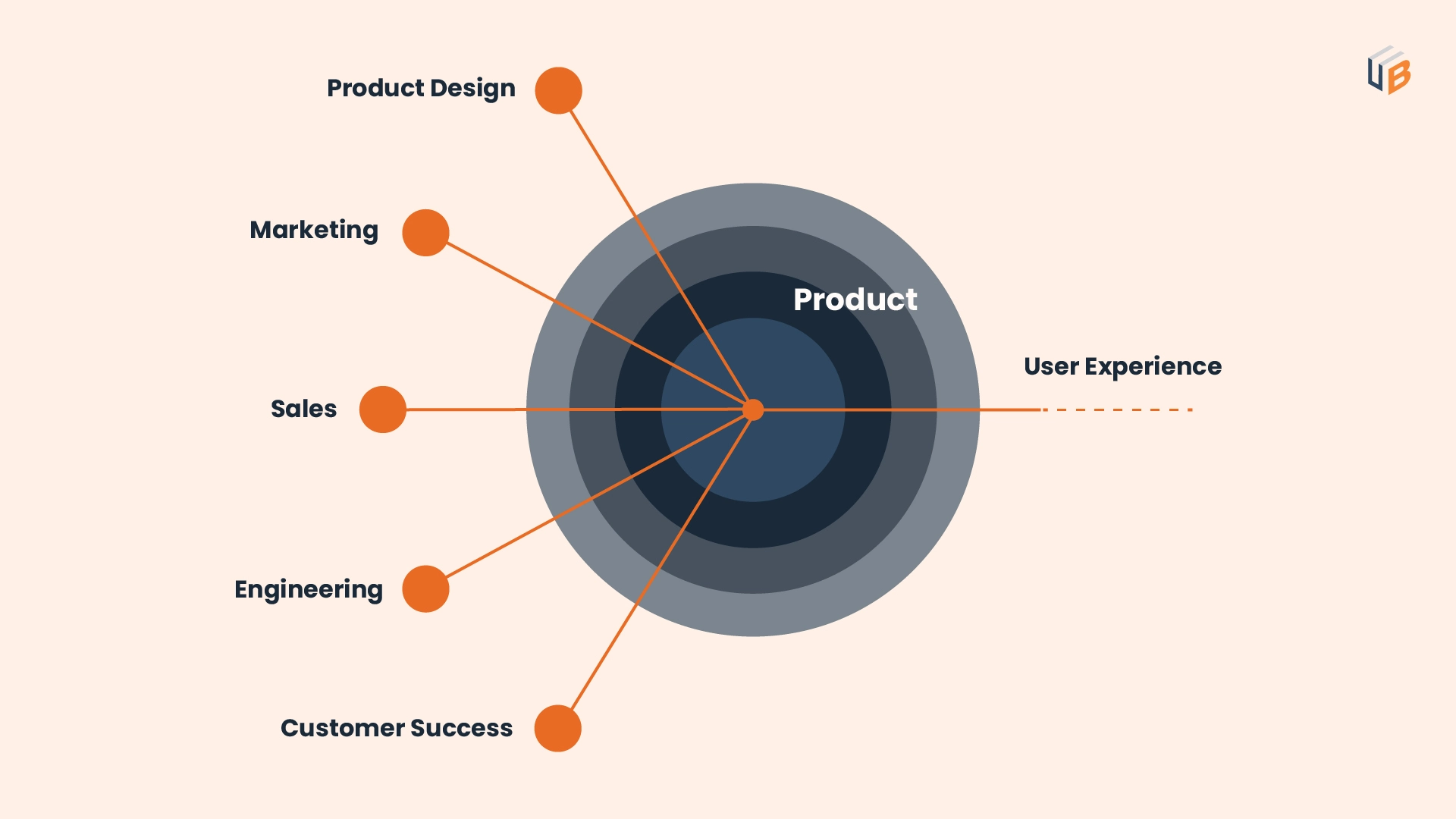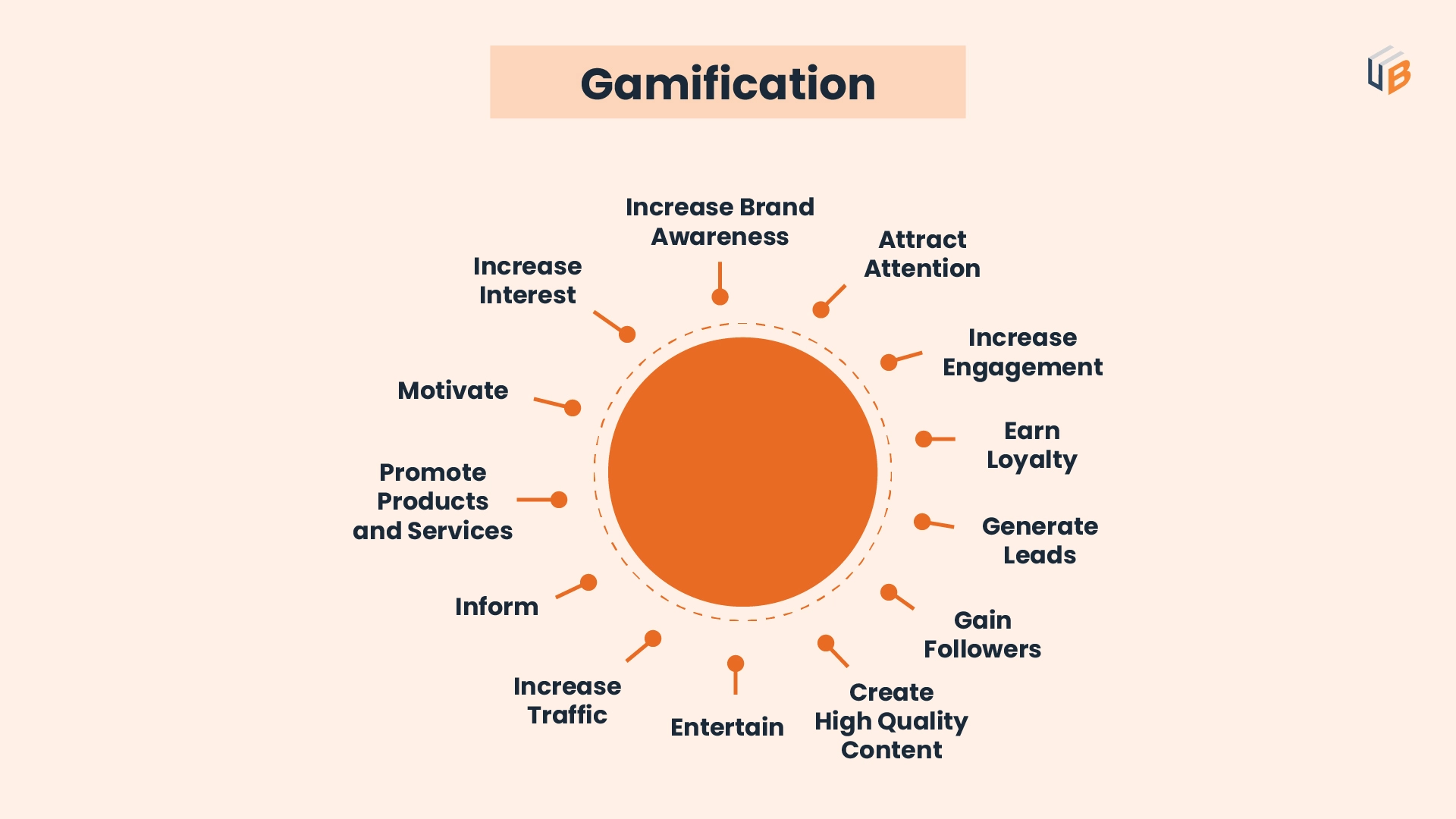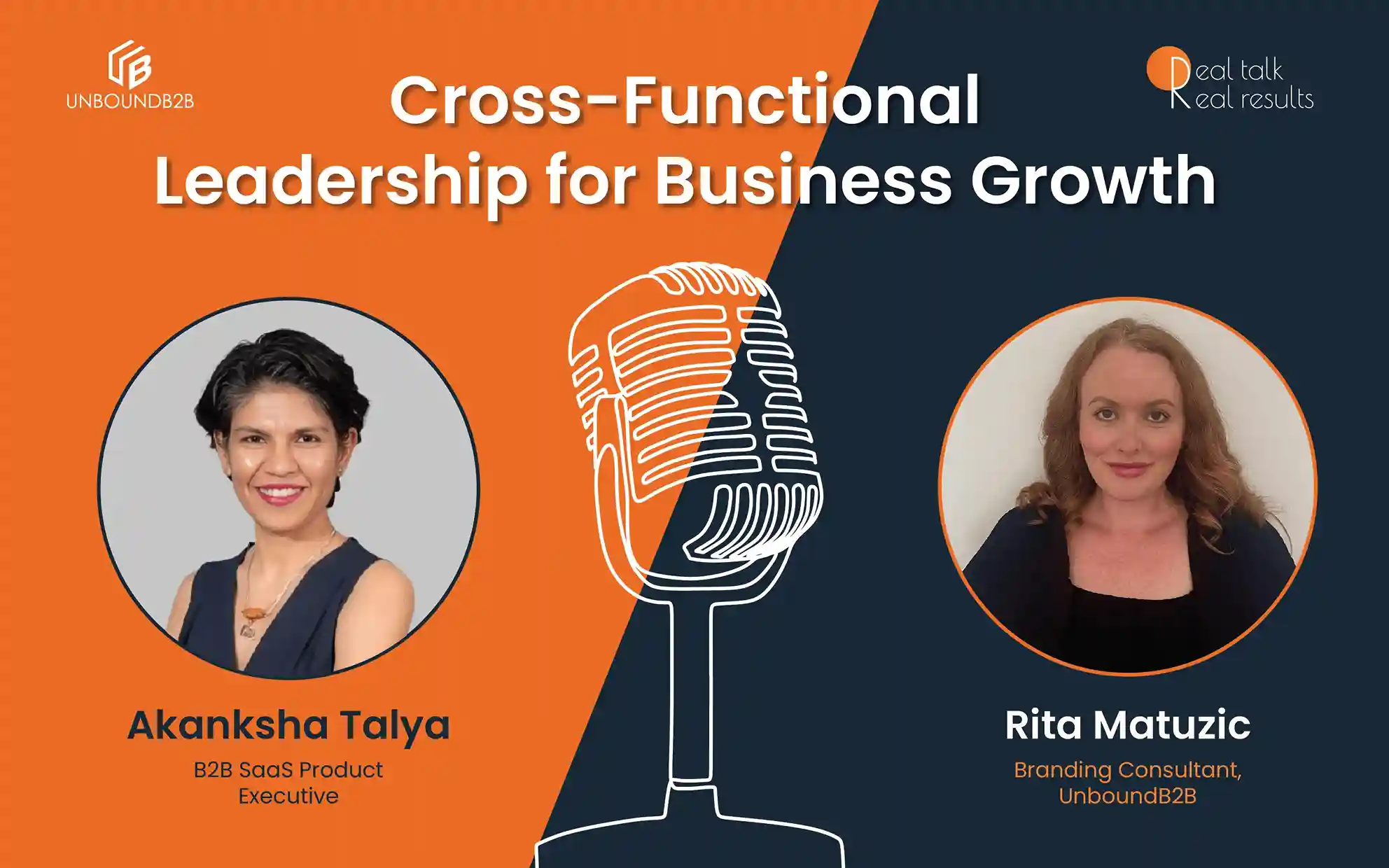
You are wondering if your business needs demand creation vs demand capture comparison to scale your business and revenue better? Well, you need both for better results! It’s not an either-or situation. Let me explain how.
Imagine you’re out for a run in the park and you see a hoarding that advertises fresh and healthy fruit and vegetable juices.
You’re halfway through the run thinking about the juices when you see another hoarding displaying the health benefits of fresh juices.
Demand Creation Vs Demand Capture
By the time you’re finishing up, you’re already thirsty and thinking about the juices. In this case, the juice hoarding has completed the creation of demand!
You’re exiting the park and spot a kiosk selling fresh and healthy fruit and vegetable juices. You go and buy yourself a fresh glass of juice. That’s demand captured!
It’s starkly evident how these two work together to create demand and capture it most naturally. This is what we need for B2B, SaaS, and Enterprise marketing.
Let’s understand the two components and the significance of demand creation in marketing.

Source – ThinkWithGoogle
What is Demand Creation?
Demand creation is an integrated B2B marketing approach that focuses on creating awareness and interest among the audience about your business and its offerings.
The demand creation in marketing efforts subsequently culminates in creating a strong demand for your business’s offerings in the market.

It includes top-of-the-funnel marketing activities that also result in an accelerated and predictable pipeline for your sales team.
Demand creation involves identifying the common pain points of your ideal customers. Once you identify these pain points, you can simply present your offerings as a solution.
You have to accomplish all of this in a manner that feels natural to your audience and not salesy.
This approach positions your business as the best solutions provider and effectively leads the audience down into the sales funnel.
Let’s check out what Demand Capture is.
What is Demand Capture?
Demand capture involves capitalizing on demand creation’s success and capturing leads that match your ICP and exhibit high purchase intent.
With demand capture, you’re targeting prospects already searching for the solutions you provide in the market.
Successful demand creation ensures that the prospects are already interested in your products. Thus, demand capturing becomes an effortless operation.
Nurturing these captured leads in the right manner will lead them down the sales funnel and result in a purchase decision.
Thus, both demand creation and capture are necessary to effortlessly scale your revenue.
Let’s proceed to understand these components in detail.
What does Demand Creation Do?
It creates demand, simple. However, there’s more here than meets the eye. A lot of activities are involved in creating demand. Let’s take a look at them.
1. Identifies Pain Points of Your Ideal Customer
Knowing what difficulties your ideal customers go through is necessary. It will help you plan a marketing strategy that will address these pain points more naturally.
2. Creates a Relevant and Relatable Marketing Premise
Storytelling is a big part of marketing. Creating a marketing premise that is relevant and relatable to your ideal customers will capture their interest naturally and effectively.
3. Educates and Engages with the Audience
Educating the audience about the solutions to their problems while engaging with them builds a relationship and trust with them.
4. Positions Your Offerings As an Ideal Solution
Once you have a relationship established with your audience, you can subtly present your offerings as the ideal solutions to their pain points.
Bonus Tip – Make your marketing a bit informal and entertaining, this will help you stand out from the competition and create a lasting impression.
Now, let’s see what Demand Capture does.
What does Demand Capture Do?
Again, more activities are happening here that result in an interesting prospect turning into a customer. Let’s check what these activities are.
1. Filters Lead for ICP Matches
There might be many people interested in your offerings but only a few are going to benefit vastly. Thus, choosing them should be a priority.
2. Asserts Value Proposition
Even interested prospects need a bit of convincing. Demos, case studies, whitepapers, customer testimonials, etc. can be used to assert the value proposition of your offerings.
3. Prioritizes Leads
Not every ideal prospect is ready to make a purchase. So it is best to prioritize prospects who are ready to make a purchase and close deals quickly.
4. Nurtures Leads
Leads that aren’t yet ready to finalize a purchase can be added to your lead nurturing program. You can use drip campaigns to achieve this objective effectively.
Bonus Tip – Offering a higher degree of personalization and ensuring a good customer experience raises your chances of conversion exponentially.
Now we know what they do. Next, we shall see how they accomplish all of this effectively.
How is Demand Created?
Demand creation involves three important things; create brand awareness, get the audience interested, and engage with them.
The following activities accomplish these objectives.
1. Using Content Marketing
Here are some latest facts. Over 70% of people get information from blogs rather than traditional advertisements. Content marketing produces 3X more leads than outbound marketing while costing 63% less. Makes sense why they hail content marketing so much, right?
When it comes to educating the audience about something, there’s nothing as effective and cost-efficient as content marketing.
You can use content atomization and content syndication to further boost the effectiveness of your content marketing operations.
2. Using Product-led Growth
This strategy uses the product itself as a tool for demand generation. You can use a freemium or a free trial model to let prospects experience your products.

The try-before-you-buy strategy works wonders, especially for the B2B SaaS industry. Your prospects can gauge the utility of the product which aids purchase decisions.
Almost all B2B executives state that the customer buying experience is really important. You can create high demand by offering the best customer experience in the market.
3. Using Webinars Hosted by Experts
People want to hear what the industry experts have to say about the field. With remote work slated to increase substantially, webinars are the go-to option.
Webinars are similarly effective as conducting big events. The only difference is that you’re not geo-restricted. This significantly raises your viewership.
A webinar landing page conversion rate can be as high as 51%. This combined with higher viewership makes webinars a good tool for demand creation.
4. Using Managed Placement Advertising
Digital advertising is very effective but managed placement takes the effectiveness and efficiency to a whole new level.
You have extended control over your ads. Where they are shown, to whom they are shown, their frequency, etc. This allows for a more targeted approach.
You can use your ICP and cohorts for targeting and easily grow brand awareness and interest. This approach helps you create and scale demand effortlessly.
Here we understand how demand is created. Next, we shall see how you can capture the demand efficiently.
How is Demand Captured?
It becomes easier to capture a prospect when he is already interested in your offerings. Using the following approaches, demand capturing can be improved even further.
1. By Using Multi-Step Forms
No one likes to fill in multiple fields in a form in one go. This deters users from converting. Instead, break down the process into multi-step forms.
You can collect information in stages. This not only makes it easier for you to segment information but also reduces the fatigue in the form-filling process.
You will still have to keep the form concise, however. Considering multi-step forms have an increasingly higher conversion rate, you won’t be missing out on leads.
2. By Using Chatbots
While chatbots are primarily used for customer service operations, they can be effectively deployed for capturing leads as well.

Over two-thirds of the users already like chatbots. They provide quick answers to queries, hold conversations well, and boost engagement effectively.
It’s easy to collect information and qualify leads in real-time using chatbots. Their ability to interact intelligently will see them being used more widely for demand capture.
3. By Using Gamification
The B2C world already enjoys the benefits of gamification for demand capture. The B2B marketing scene has also been transitioning to being more fun.

With gamification, you can capture demand and make B2B marketing fun in one go. How? You can use quizzes, fun questionnaires, interactive polls, etc.
Participating in such fun demand creation activities triggers a user’s reward emotions; they’re more likely to convert using this method.
4. By Leveraging Technology
Directly reaching out to a lead is effective as well. The trick is to know the best time to engage in a direct dialogue with them. Technology can help tremendously here.
Behavioral analysis and intent data analysis are powerful sets of tools for demand capturing. They quantify user behavior and purchase intent.
These systems notify sales executives when a lead exhibits that they’re sales-ready. Sales executives can then directly engage with them and capture the demand.
Now you know all about Demand Creation and Capture. Let’s address the next big question regarding the two!
What Can You Prioritize in Demand Creation vs Demand Capture?
You already know that both are necessary. So, the next logical question that stems is which one should you give more priority to.
The answer to that depends on what you’re trying to achieve. Let me explain.
Prioritizing demand creation will grant you wide and effective top-of-the-funnel leads You will be able to reach more people and create a positive impression on them.
This approach is very effective when you’re trying to scale the operations of your B2B business.
However, you will have to make sure that you’re well prepared for the rapid scaling of operations. The growth that you cannot handle can be damaging to your business.
With demand creation as your priority, you will be measuring transaction volumes, impressions, clicks, and reach.
Prioritizing demand capture will grant you longer and more effective bottom-of-the-funnel leads. You will be able to convert more prospects into customers this way.
This approach is effective when you want to drive more profits for your B2B business.
You can raise your profit margins significantly which gives you the ability to reinvest the profits into more lucrative activities such as R&D, expansion, or enhancing customer experience.
You will be trading odd growth with higher profit margins, however, you can expect a marketing ROI that ranges between 4X to 10X with this approach.
What Are You Choosing?
When you choose to prioritize both the aspects of demand creation vs demand capture, it ensures you drive revenue growth for your organization.
It was never an-either or situation and I hope this article has helped you understand that both demand creation and capture are equally important.
While traditional lead generation is still effective when done right, opting for the demand approach gives you more control over the direction your firm is heading into.
So, what will you prioritize? Scaling or profit margins?
Our blog
Latest blog posts
Tool and strategies modern teams need to help their companies grow.

Programmatic ABM combines the effectiveness of targeted engagement with automation. I...

Take advantage of the year-end holiday rush so you can boost your SaaS revenue and st...

Boundaryless, cross-functional leadership is the key to successful, high-performing p...







